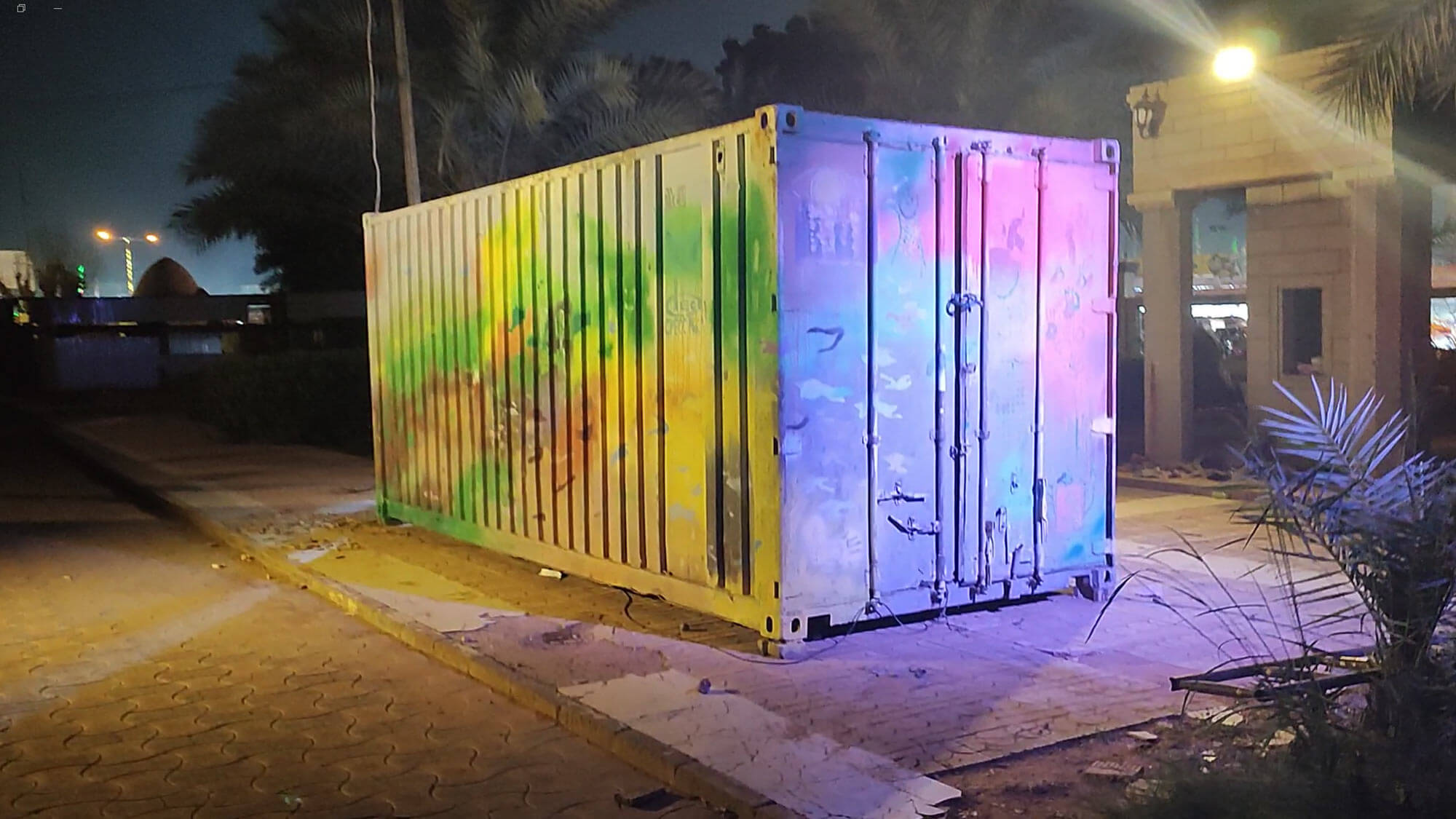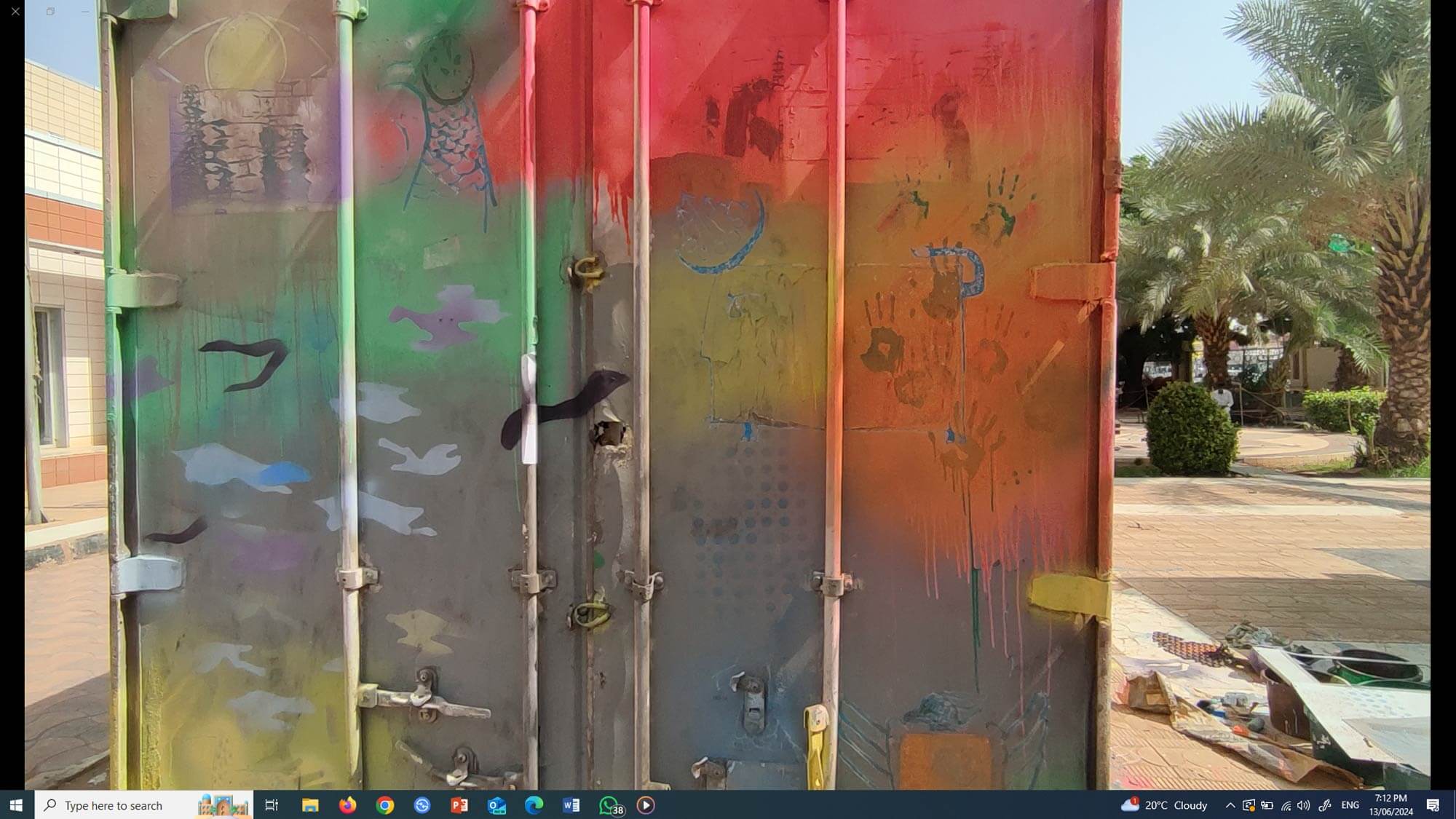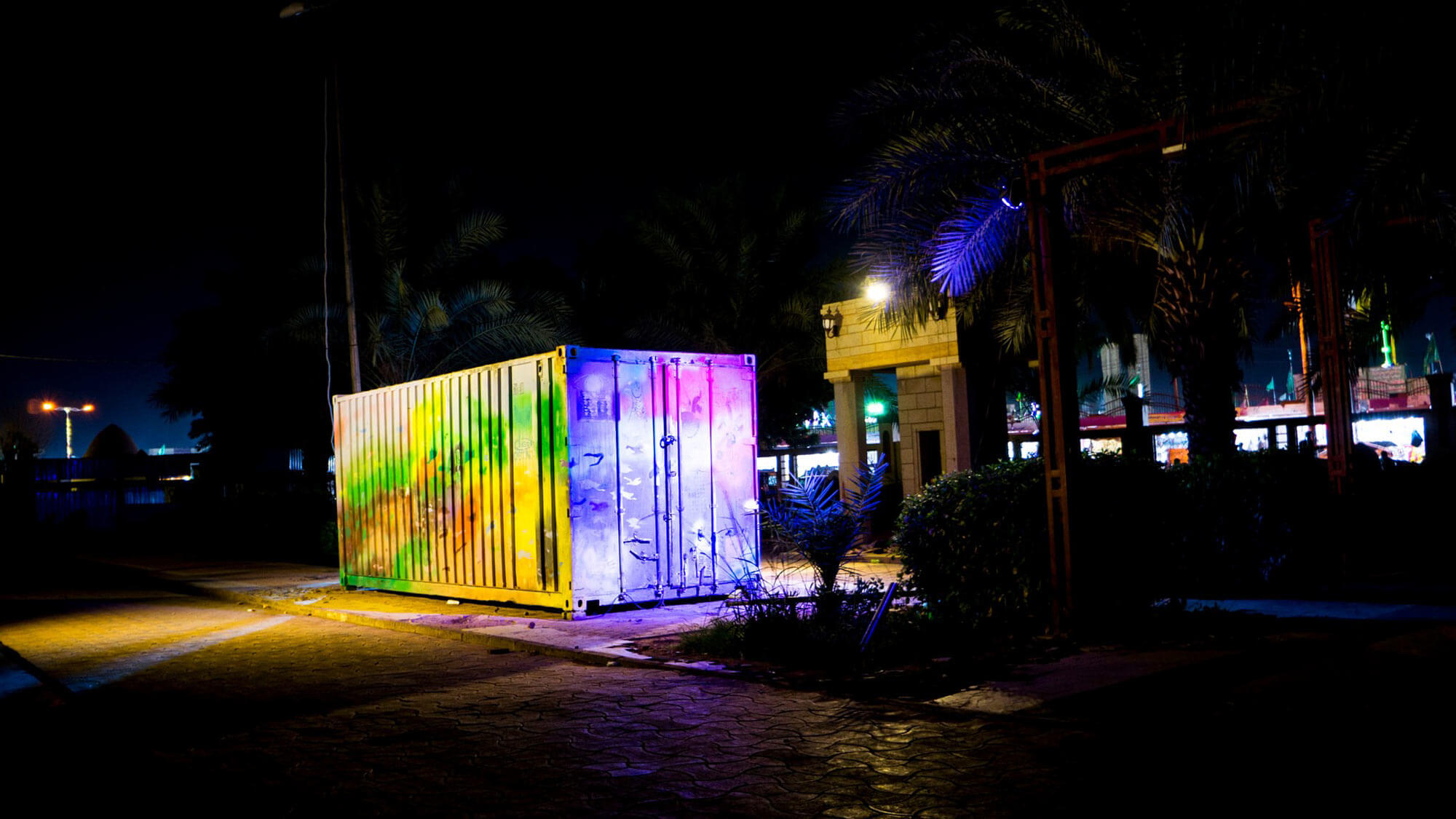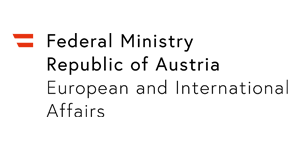Haawriya
The word “haawriya” in Arabic means both “freedom” and “container”. Standing for freedom, the nonviolent protesters of the Sudanese Revolution overthrew Omar al-Bashir in 2019, and then faced the repressive military. Likewise carved into memory is the image of the shipping container, with hundreds of dead inside, believed to be victims of the brutal ‘Sit-in Massacre’. Ali’s art is a form of resistance, ranging from participatory works such as this, to powerful murals and mosaics.
Jury Statement
Haawriya is an installation composed of a shipping container painted with various colors and symbols. Hidden loudspeakers reveal different sounds of protests reproduced to form a kind of cultural resistance. The term ‘Haawriya’ derives from two Arabic words meaning “container” and “freedom”. They are combined here into one word to reveal the tense relationship between the two extremes — container as a means of oppression, and freedom as a demand of the Sudanese Revolution.
The container was used as a mortuary where hundreds of unidentified dead bodies were stuffed. It was used to block bridges to prevent non-violent protesters from gathering at different places, restraining their freedom of movement and expression. This installation depicts how Sudanese people view the metal shipping container in this new context: from being a useful container carrying goods around the world, it has turned into a block employed to kill their dreams of freedom, peace and justice.
Credits
The presentation of the work is funded by State of the ART(ist), a collaboration between the Austrian Ministry of Foreign Affairs and Ars Electronica.

Said Ahmed Mohamed Alhassan
Said Ahmed Mohamed Alhassan is a visual artist who studied both engineering and fine arts, pursuing the latter as a career. He graduated with a first-class degree and was awarded the prize for the best graduation project at the College of Fine Arts, Sudan University in 2016. His artworks explore societal transformations from a new visual perspective. He contributed to several exhibitions and mosaic murals in Sudan, Egypt, and Tunisia. He recently displayed his artwork at the 2024 Venice Biennale in the Artists At Risk Pavilion.




